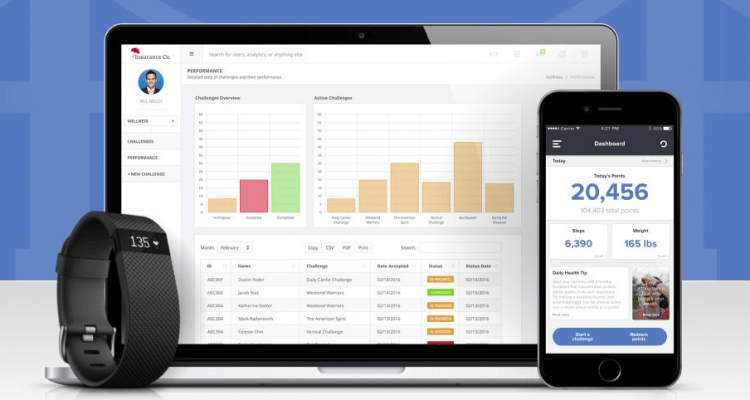
5 insurtech trends to watch in Southeast Asia
When you think of insurance, certain things come to mind. The overbearing smell of coffee when meeting your own insurance agent for one, or the ink fumes after filling in the long insurance plans. For better or worse, convoluted insurance plans are a feature in our daily lives.
Insurtech, a relatively new buzzword, is making its mark in the West. According to a recent Burnmark report, telematics – the act of transmitting computerized information – has helped more than 15 percent of the UK car insurance market transition to a usage-based insurance model. In the US, insurance companies are offering discounts to premiums of up to 15 percent to customers using health apps.
As digital technology is further embraced, insurance will become less about meandering clauses. Delivering a differentiated experience, customized products and services, and a simplification of the end-to-end engagement with the insurance company will be areas of greater focus. Here are five future insurtech trends to watch for in Southeast Asia.
1. Technology enabling lower premiums

Photo credit: GoodParents.
We can expect a rise in usage-based insurance and dynamically adjusted premiums, moving away from conventional static premiums. Health apps such as Health2Sync and GOQii could generate useful information for insurance companies that ultimately benefit the customer through lower premiums. The rising use of dash cams in vehicles to monitor and reward good driving is also a good example of how technology has benefited both the customer and insurance companies in managing claims.
Asia’s innovators are stepping up to win a piece of the action. Looking at the health and wellness tracker space, GoodParents, based in Hong Kong and San Francisco, is developing the world’s first commercial tracker for kids aged between 3-10 years old. Kiddo tracks key biosigns in kids, including temperature, heart rate, perspiration rate, and bioactivity. One example of a behaviour-related reward scheme: CXA Group, founded in Singapore, offers a corporate insurance scheme that enables employers to reward employees based on their health or frequency of participation in healthy activities.
While it remains to be seen how Southeast Asian clients will respond to such technologies, a recent report on the insurtech ecosystem by Baker and McKenzie shows that state bodies are unlikely to discourage the use of data in this way.
Across Singapore, Thailand, Vietnam, Malaysia, Indonesia, and the Philippines, there are no specific regulations on telematics, although compliance with local personal data protection and business standards may well apply. In Hong Kong, data may only be used where justified, and may require procedural and technological safeguards.
2. More mobile solutions

A woman in Taipei on her phone. Photo credit: Antonio Tajuelo.
90 percent of insurance companies expect their customers to be significantly more reliant on mobile channels and apps to reach their brokers over the next five years.
This signifies a great opportunity for the traditional insurance provider. First, it will be easier to reach new customers. Second, by making insurance more accessible by integrating sales, premium collection and claims settlement on a multi-purpose platform that can be accessed virtually anywhere will deliver a differentiated customer experience. Thirdly, collaborative ventures with mobile companies mean that premium payouts may be dispensed through alternative means like airtime, mobile money, or loyalty wallets.
In the developing communities in Southeast Asia, the most time and cost effective way to receive insurance coverage is probably through mobile solutions. Companies like Democrance bundle microinsurance and mobile phone subscription plans (Democrance’s current traction is in the Middle East and Northern Africa). Bundling enables microinsurance schemes to be viable because overall subscription is now scaled to the overall mobile usage within that community. In addition, consumers no longer need to commit to mid-to-long-term policy plans as payments can be made monthly.
So, in response to affordability dilemma, it is now possible to envisage a world where an individual can spend on a new mobile phone and make savings on their health care needs!
3. Aggregators enabling better-informed insurance choices

Photo credit: Sureify.
In the West, online insurance aggregators are commonplace. These sites are essentially a “one-stop shop” where customers view the latest offerings, can compare features and pricing with ease, and save significant amount of time on doing independent research.
In Southeast Asia, aggregator presence is still relatively low, and where they do exist, such as CompareFirst.sg, in Singapore, the functionality is still fledging. New contenders such as Sureify are working to address the current shortcomings in user experience and analytics to close the gap and grab this unique opportunity.
As customers become better-informed, insurance companies are likely to adapt their product and service offerings to better meet the consumers’ needs and boost acquisition. Differentiated insurance offerings catering for new and to existing customers will become the norm.
Goodbye, coffee-stained insurance plans. Hello, competitively-priced, tailored policies.
4. Increased collaboration between startups and incumbents

Photo credit: LumenLab.
Certain barriers to entry may restrict a wave of new standalone e-insurance brokers. Except for Indonesia, all Asian countries require insurance companies to comply with local technology risk-management rules. Some aspects could be transferable, like a requirement to have disaster recovery plans – this is mandated in Taiwan, and being considered in Singapore. Other aspects are not transferrable. According to China’s Guidelines for the Administration over the Information of Insurance Companies (for Trial Implementation), providers are required to establish a data center and disaster recovery center within the jurisdiction.
That being said, “disruption” comes in many forms, and given the size of the opportunity that insurtech presents, more collaboration is inevitable. In 2016, Sun Life of Canada (Philippines) Inc began a partnership with Voyager Innovations with an emphasis on developing insurtech for developing markets. MetLife launched its own program, Collab to attract innovative ideas. Collab essentially takes MetLife’s experience in the insurance industry and works closely with market-ready startups to solve problems at MetLife. The startups are competing for a USD100K contract and a chance to sell its solution internally to a Fortune 50 company.
With the help of tech startups, the traditional insurance companies will probably get a long overdue facelift. Mobile-based training platforms like Capabiliti help agents attend to potential clients better. Flamingo has an emphasis on giving consumers the best possible user interface.
5. Big data gets better

Photo credit: Pexels.
It is a known fact that the insurance industry is awash with data. This, together with the explosive growth in connected devices, is supplying more data than many of us ever dreamed was possible. In Asia, the number of connected devices is expected to soar from 3.1 billion now to 8.6 billion by 2020.
The sheer volume of data available is creating a new era for the insurance industry, one in which old-fashioned actuarial tables can be enhanced with real-time data and dynamic pricing. Companies such as Digital Fineprint specialize in digesting data from social media platforms so it can be managed by insurance companies. Uniphore provides speech analytics, a virtual assistant, and voice biometrics covering 80+ languages. Wearable tech and telematics also give companies more personalized data.
Companies like Shift Technology also use AI technology to detect insurance fraud more efficiently.
As MetLife’s pioneers for disruptive innovation, LumenLab is charging ahead to create new businesses in health, wealth, and retirement. Lumen, a measure of light, symbolizes our commitment to illuminating a new path for solving the problems that the people of Asia face today. Through our focus on building new products and services grounded in technology and data, we aim to help people achieve richer and more fulfilling lives.
For more information, visit www.lumenlab.sg.





